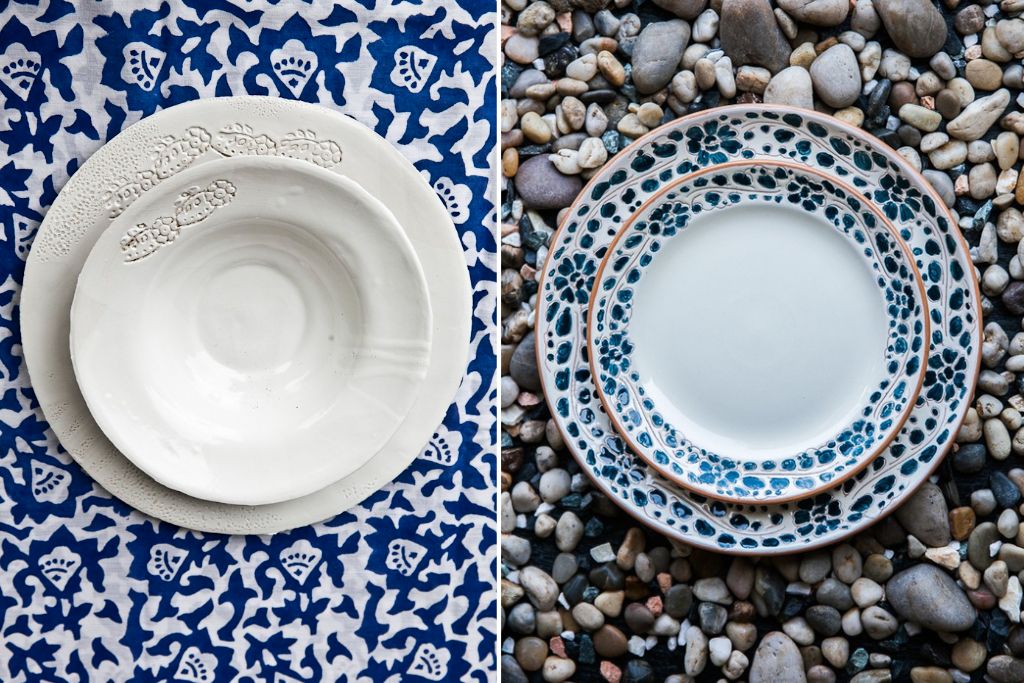Ceramic vs Porcelain Tableware - What's The Difference?
May 15 2023 – Anna Cube

We receive many e-mails and messages asking for information and advice on ceramics, on how to choose and combine dishes, on the different materials and on their care. So, we’ve decided to write a series of short posts, sharing with all of you what we've learned over the years about the wonderful world of tableware.
One of the most recurrent question is: What’s the difference between Porcelain and Ceramic dinnerware?
Porcelain is just one of the variations of ceramic. The family of ceramics includes earthenware, stoneware, porcelain, bone china, and others.
The main difference is that the clay used to make porcelain is refined and is hardened at higher temperature, resulting in a more resistant, yet delicate and translucent appearance.
Production process
Ceramic dinner plates are made from a mixture of clay, water, and other minerals. The clay is shaped into the desired plate shape and then dried. After that, the plate is fired in a kiln at a temperature of about 1,000 to 1,200 degrees Celsius. Ceramic dinnerware is thicker and more opaque than porcelain, and is also known for its colorful and decorative designs.
Porcelain dinner plates are made from a specific type of clay called kaolin, which is combined with feldspar and other minerals. The mixture is shaped into the desired plate shape and then fired at a higher temperature of about 1,200 to 1,400 degrees Celsius. The production of bone china is essentially the same, except for the addition of bone ash which makes tableware stronger and with a more off-white color than porcelain.
Test Yourself
Which bowl in the pic is made of porcelain?
USEFUL TIPS 🕶️
👉 Ceramic plates are often considered to be less luxurious and expensive than porcelain plates. This may be true when comparing industrial products, but doesn’t apply if the plate is hand-made or hand painted. The next post will help you find out when a plate is artisanal.
👉 Ceramic plates can have a slightly porous surface that can absorb some liquids and stains over time. When you buy them examine the plate to ensure the glaze appears evenly applied, no imperfections and/or worn spots.
Which is better between porcelain and ceramic dinnerware? Well, it depends on the quality of the plate and on your taste!














3 comments
I really enjoyed this post! The comparison between ceramic and porcelain tableware is so helpful. I’ve always wondered about the differences, and this made it much clearer. I’ll definitely keep this in mind for my next tableware purchase. Thanks for sharing such useful and informative tips! Visit : https://tresorie.in/
Dive into the world of tableware with a comparison of ceramic versus porcelain. Discover how stoneware adds a unique touch to your dining experience, blending durability with timeless elegance.
Thanks for pointing out how ceramic plates have slightly porous surfaces so they are more prone to staining. I need a set of stone dinnerware that I can use to impress guests time and time again. I’ll get porcelain instead if it’s more stain resistant. https://ask2cmore.com/elama-rustic-birch-16-piece-stoneware-dinnerware-set-in-purple.html